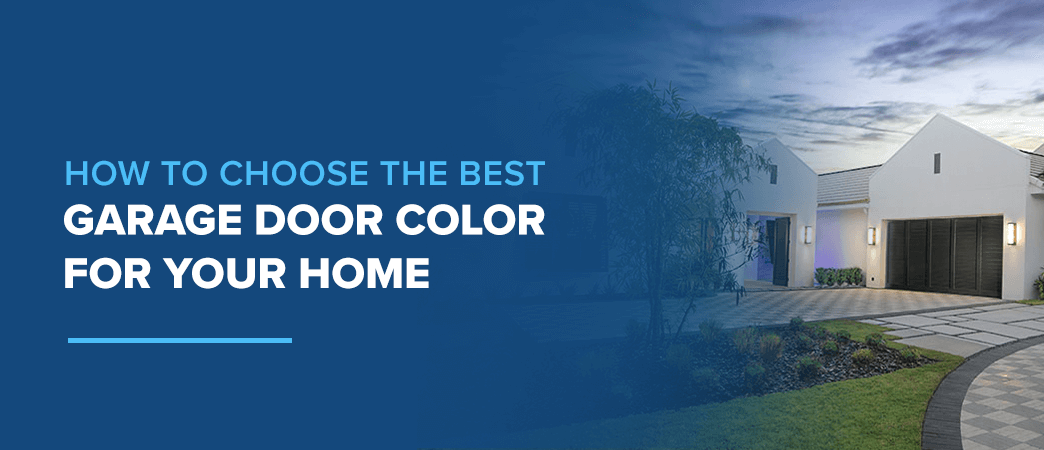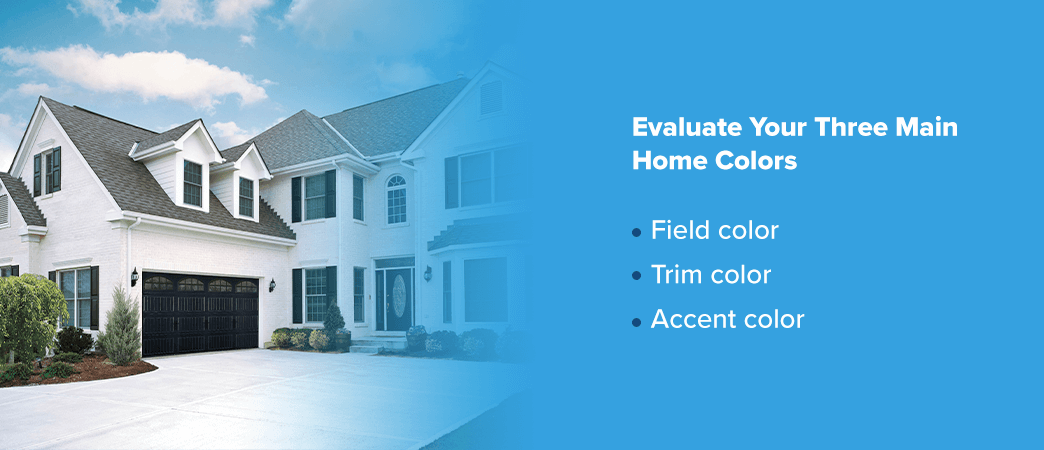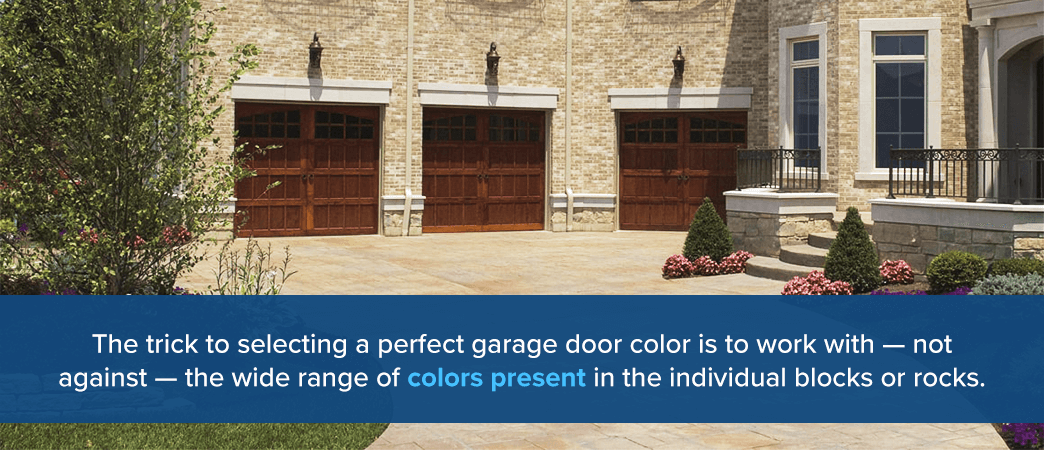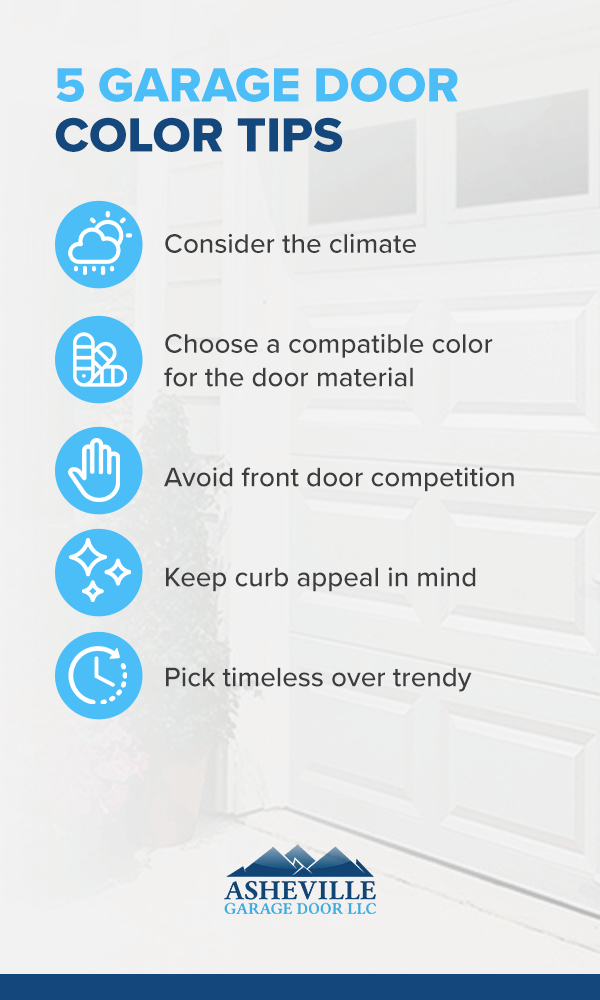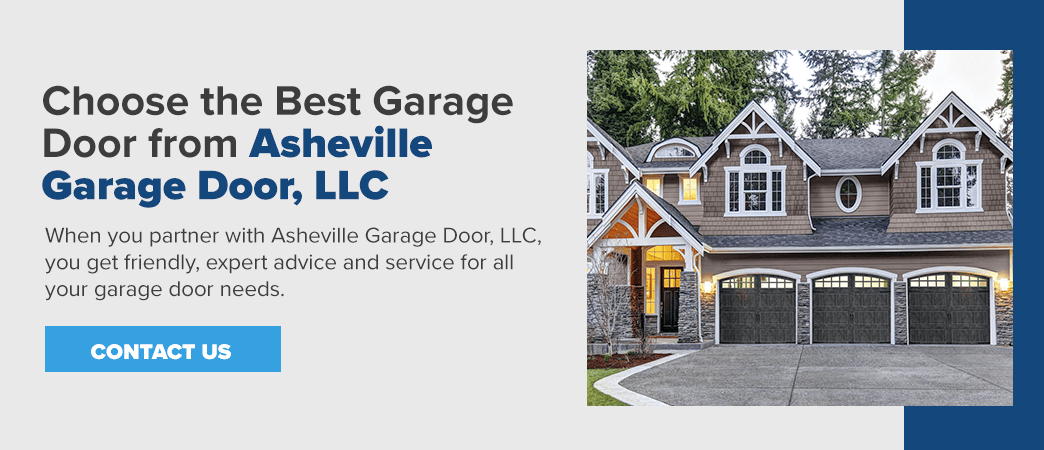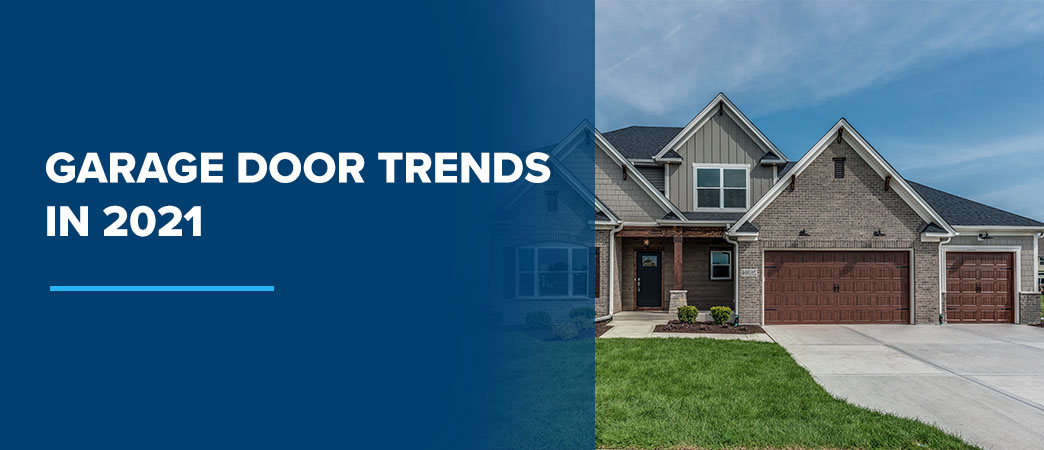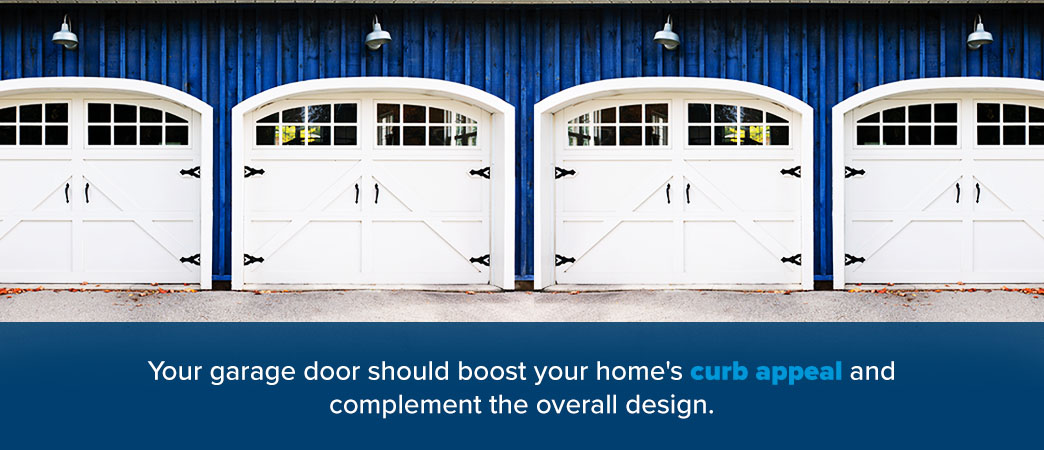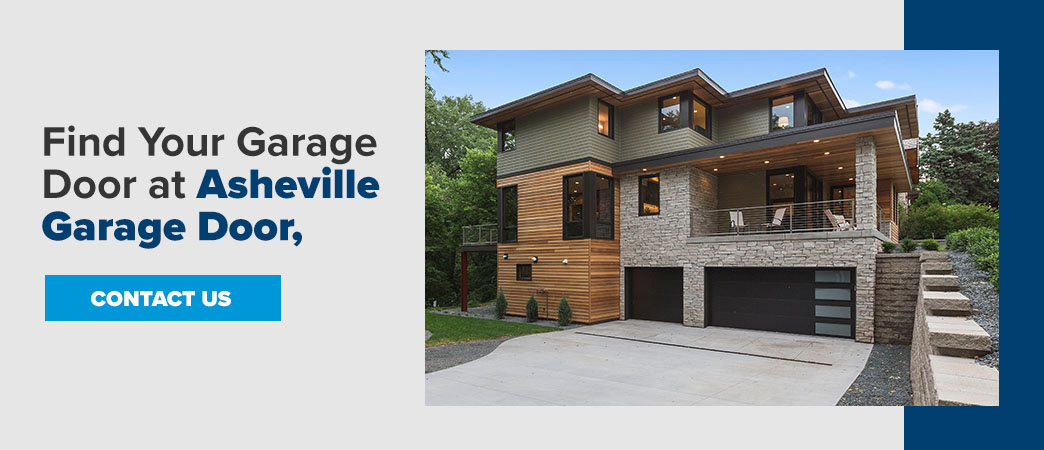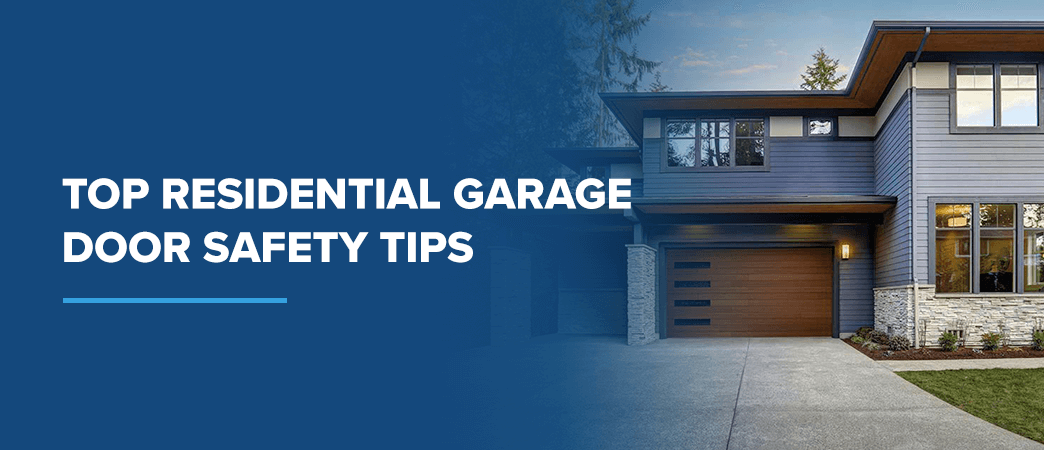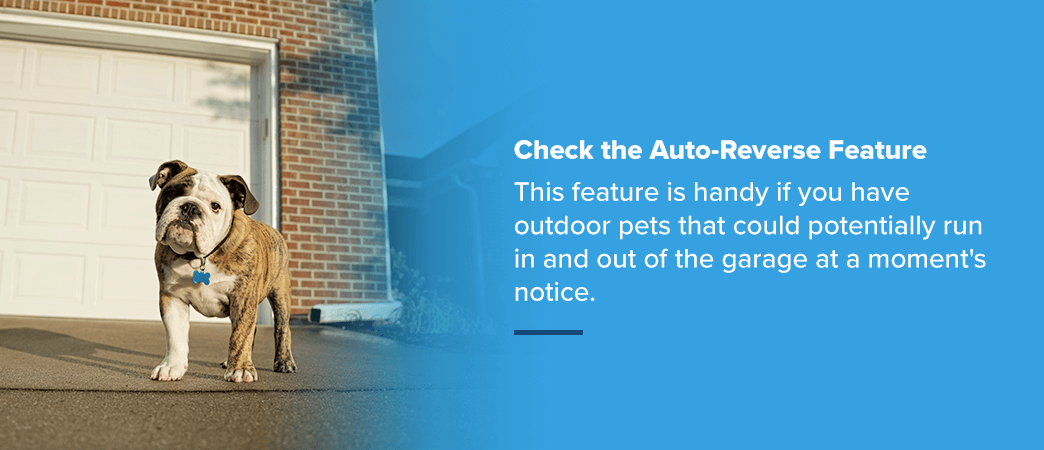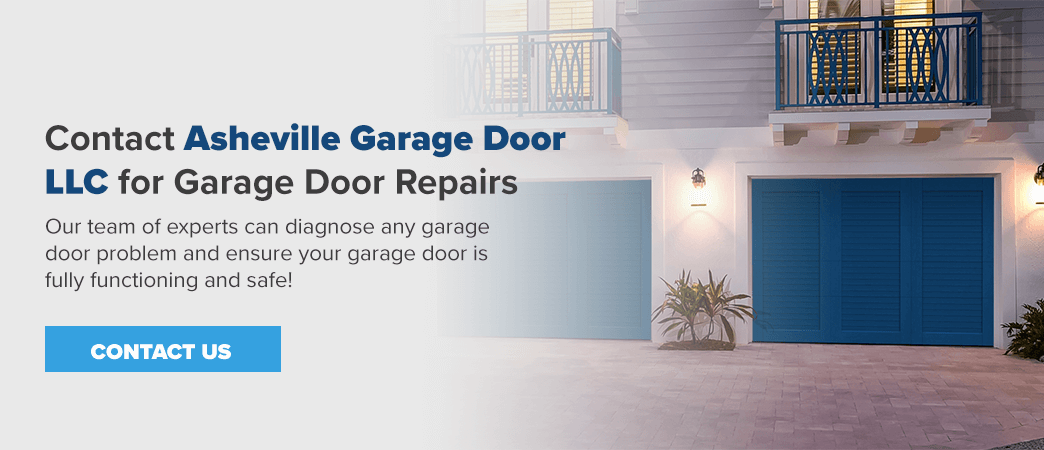What are the Parts of a Garage Door
Parts of a Garage Door
The garage is an essential part of any house. Your garage can improve curb appeal and the overall value of your home. Even if you use your garage door every day, you might not know much about how the garage door system works. When you learn more about the components of a garage door and how they operate, you’re better prepared to face potential challenges and make the best choices for your home.
Components of a Garage Door System
Garage door systems vary, but most have the same essential parts and pieces. Here are the primary components of the typical garage door:
- Door: The door itself is the most prominent part of any garage system. Garage doors, also known as sections, are the panels that serve as the actual barrier between your garage and the outside world. These panels come in various sizes and styles to suit your preferences, including sectional, retractable, roll-up and more. You can choose from materials like steel or aluminum and nearly any color you can imagine.
- Opener: Your garage door opener is a central component of the system’s opening mechanism. The operator is a small box mounted on the ceiling that contains a motor and a small computer. Garage door openers come in several brands and styles, but they all require electricity to open and close the door.
- Springs: Along with the opener, garage door springs provide much of the power needed to open the door. Springs counterbalance the garage door’s weight, harnessing elastic energy to reduce strain on the operator or anyone manually lifting the door. There are two types of garage door springs. A torsion spring is placed above the door, while extension springs run along the side of the horizontal tracks.
- Tube: Only systems with torsion springs have a tube shaft. The tube shaft is a metal bar mounted above the garage door that keeps the torsion spring in place. The spring wraps around the tube and transfers its power to the drums.
- Drums: Drums are also only present on garage doors with torsion springs. Garage door drums are like pulley wheels that sit on either end of the tube shaft and connect to the cables. When the torsion spring releases energy, the drums rotate and cause the cables to extend or retract, depending on whether the door is opening or closing.
- Cables: Garage doors have several types of cables, including torsion spring cables, extension spring cables and safety cables. Metal cables primarily connect the bottom of the garage door to the drums and pull the door up as the lift mechanism is activated.
- Tracks: Tracks and rollers keep the door on a set path. Metal tracks and small wheels make sure the door stays in place every time it opens and closes. These tracks ensure proper alignment and safe operation. Many doors won’t open if they come off the tracks as a safety feature.
- Safety sensor: Motorized garage doors are useful tools, but they’re also potential safety hazards due to their size and weight. Federal standards require every garage door installed after 1992 to have safety sensors. These sensors sit a few feet above the ground on either side of the garage door. If they detect something in the door’s path as it closes, they automatically halt the door to prevent injuries.
- Additional features: Every garage door system is different, and some have additional features, such as emergency cords, locks for security and struts and seals for extra support or reinforcement.
When Do I Need Garage Door Parts?
If you use your garage every day, your garage door system experiences a lot of wear and tear. Over time, constant use can erode various parts of the system and lead to problems. Proper maintenance can extend the life of your garage door components, but when a major problem arises, you need a professional to quickly and safely address the issue.
At Asheville Garage Door, LLC, we offer garage door installation, service and sales. Our team of skilled technicians is available to assist you with a range of residential and commercial garage door issues or to install a new door at your home or business.
Garage Door Service and Installation in Asheville, NC
Learn more about garage door pieces and how Asheville Garage Door, LLC, gets our customers the best products and services available. Get a free estimate from our team or request a service appointment today!
How Long Do Garage Door Springs Last?
How Long Do Garage Door Springs Last?
Garage door springs are a central component of every garage door system. These springs help your door function properly every day, but how much do you really know about them? A broken spring is one of the most common issues with commercial and residential garage doors. Learn more about the average lifespan of garage door springs and when you should replace them.
What Are Garage Door Springs?
Garage door springs are a basic part of any garage door. Springs provide the lift necessary to open and close the door. Most residential and commercial garage door systems use either torsion or extension springs.
Torsion Springs
Garage door torsion springs use mechanical energy and torque to lift and lower the door. These springs wrap around a horizontal bar, which is mounted on the wall above the garage door. The torsion springs tighten when the door is closed and loosen when the door opens.
Extension Springs
Another common type of garage door spring is the extension spring. Garage doors that use an extension spring system have two springs that run along the side of the horizontal tracks and provide equal support on each side. The tightly coiled springs are attached at both ends to other garage door components.
Why Do Garage Springs Break?
Broken springs are a common problem among garage doors of all kinds. There are several reasons why torsion and extension springs break:
- Age: Every time you open or close your garage door, it puts pressure on the springs. This constant use can lead to deterioration over time.
- Rust: External materials also contribute to the decline of garage springs. Rust, dirt and debris accumulate over the years, speeding up the deterioration process. Regular maintenance can help prevent rust buildup and extend the life of your springs.
- Excessive pressure: If your garage door system relies on one torsion spring instead of two or isn’t suited to your door, the excessive pressure can wear down the springs and reduce their expected lifespan.
Garage Door Spring Life Expectancy
The life expectancy of your garage door springs depends on several factors, including the type of spring, your garage door system and how often you use it. The typical lifespan for most springs is about 10,000 cycles or three to five years.
If your springs are approaching this age or you begin to notice changes in their appearance or function, it might be time to consider new garage door springs. It’s better to replace your springs early than to wait until after they break.
Call Asheville Garage Door Today
If you need to replace your garage door springs in Western North Carolina, call Asheville Garage Door, LLC. With over 25 years of experience, we’re the premier garage door installation, repair and service company in Buncombe County.
Our experts provide professional service and high-quality parts for projects of any size. We’re so confident in the quality of our work that we offer full-year warranties on parts and labor for new installs. Contact our team with any questions or call us at 828-255-0830 to get a free estimate from our garage door experts and replace your garage door springs today!
How to Choose the Best Garage Door Color for Your Home
How to Choose the Best Garage Door Color for Your Home
Is your garage door looking a bit lackluster? Maybe the paint is fading and peeling, or it no longer fits right with your style or neighborhood architecture. Whatever the reason for wanting a new look for your garage, the great news is that updating the door can increase your property value and could even offer a substantial return on investment!
Since most garage doors take up as much as one-third of your home’s facade, the color choice significantly impacts your home’s overall look — making it all the more crucial to choose the best color for your home.
Our experts are here to take the guesswork out of knowing what color to paint your garage door with this handy guide. Discover how to select the right garage door color based on your home’s color scheme, exterior finishes and architectural style.
What Color Is Your House?
Before you pop open a can of paint or finalize a new garage door purchase, make sure you choose garage paint colors that complement your home’s color scheme. Just because you love a particular shade doesn’t mean it’s a wise choice for your house exterior.
A vivid purple blouse may look incredible on you, but that shade on your garage door could turn your neighbor’s heads for all the wrong reasons.
To pick the best garage colors for your home, you first need to examine your home’s color scheme.
Evaluate Your Three Main Home Colors
Step outside and take a long look at your home’s exterior. Make sure the garage is in view, even if it isn’t attached to the main house so you can visualize finishes together.
Every home has three main colors. What are yours?
- Field color: The dominant color covering most of your home — the brick, stone or siding exterior — is the field color. Garage doors that match a home’s field color blend in and visually expand the house.
- Trim color: Trim includes edging material like door frames, awnings and soffits, and they’re usually a neutral white, cream or black. Many homeowners like to match their garage door to the house trim.
- Accent color: The boldest colors on a home are found in eye-catching accents — your front door and shutters. Avoid matching the garage door to your dominant accent color so you don’t upstage your home’s main areas.
Let’s dive into a quick lesson on the color wheel and color theory to help you understand how colors relate to one another:
- Complementary colors: Complementary colors are direct opposites on the color wheel and offer the strongest visual contrast. Warm yellow pops against cool purple, and vivid orange sings against calming blue.
- Monochromatic colors: Monochromatic colors are different shades of the same hue that offer a cohesive look. The light-to-dark gradient effect on paint swatch cards is an example of a monochromatic aesthetic — imagine a bright pink door on a pastel pink house with a barely pink, almost white trim. On-trend ombre is a popular interior design choice, so it’s no surprise this is a desirable look for house exteriors.
- Analogous colors: Colors next to each other on the color wheel are analogous, like red and red-orange or blue and blue-green. This visual effect is a little bolder than monochrome, yet not as intense as complementary colors.
- Warm and cool colors: Warm colors grab attention and excite, while cool colors calm and relax the viewer. The colors on one half of the wheel, from yellow to red-violet, are warm — the golden sunset colors. You’ll find cool colors on the other half of the wheel between violet, blue and green — think oceanic, grassy hues.
- Neutral colors: Black, gray, brown, tan, cream and white neutrals are not typically included on the color wheel. In the context of design, neutrals are the most versatile because they pair with just about every other color, making them the most popular choice for garage doors.
Now that you understand the effect of different color combinations, let’s learn how to pick a garage door color based on your home’s existing appearance.
White House Garage Door Colors
Bright and timeless, a white house is the perfect blank canvas for various garage door finish and color ideas:
- White: If you want your home to appear larger, a monochromatic white garage door extends the main color of your home, so visitors focus on other details.
- Black: If you want guests to notice your garage door immediately, an elegant black door provides the highest contrast against a modern white house.
- Gray: If you want contrast without committing to a black garage door, consider cool neutral light dove gray or dark charcoal alternatives.
- Brown or wood stain: Do you love the contrast of gray but desire warmth? The warmer tones found in brown or wood-stained doors offer a rich, timeless look.
- Color: If you crave color, white homes offer an ideal backdrop. Prevent the children’s coloring book look by skipping primary colors and choosing softer, more sophisticated versions of your favorites. Instead of color-wheel blue, choose a lighter shade blended with gray. Instead of bright shamrock green, use a softer shade mixed with brown or cream, like olive or sage. Create a cohesive color story with matching shutters, and choose a complementary color for your front door.
Gray House Garage Door Colors
The gray house exterior trend has picked up steam as a versatile neutral option. From nearly white to dark and stormy, the range of grays is vast. Select a door color that complements your specific gray, be it cool or warm, light or dark:
- Make it monochrome: Use the same gray as your home’s field color to expand your house visually and keep your garage subtle. For contrast, choose a gray that’s a shade or two lighter or darker — be sure to maintain the same cool or warm undertone as the dominant gray hue of your home.
- Add contrast: If you want to balance pops of color with a neutral color scheme, add contrast. Is your home a light gray? Go for dark charcoal or black. Is your house a dark gray? Go for a crisp white garage door.
- Dig into deep color: If you want your garage door to make a statement, choose a saturated, darker color for your gray exterior. Rich jewel tones and deeper hues like navy blue, hunter green and burgundy contrast against a gray backdrop. Pull it all together with matching shutters or other architectural details.
- Be careful with browns: Contrast is the key to a successful wood or brown-tone garage door with a gray house. The overall aesthetic could look muddy if both tones are too similar — equally dark or light, or equally cool or warm. Work this color combination with contrast in mind. Pair a dark brown wooden door with a light gray home, or add a warm cedar door to a cool charcoal exterior.
Stone and Brick House Garage Door Colors
The beauty of stone and brick is found in their natural texture and color variations. A brick home may look red from afar, but up close are shades of brown, maroon, bright red and black. The trick to selecting a perfect garage door color is to work with — not against — the wide range of colors present in the individual blocks or rocks. A garage door color that looks great with a gray rock exterior may not look good with reddish brown stones.
Follow these tips to choose the best color door for your brick or stone house:
- Lean into analogous colors: Examine all the tones in your stone. What’s the primary color? What are the accent tones? If you want your garage door to blend in, select a color that’s close to the main color. If you want a subtle contrast, choose a nearby tone on the color wheel.
- Adopt the natural aesthetic: Brick looks lovely with earthy colors and wood tones. Consider neutrals found in nature for your garage door — warm browns, textured wood, smoky grays or creamy taupes.
- Choose high-contrast: Determine the dominant color in your stone and choose a sophisticated version of the complementary color from the color wheel for a dynamic appearance. If your brick is red, choose an earthy green tone — mint, sage or moss. For a yellowish stone, a muted lavender garage door will play up the wow factor.
- Use a soft neutral: Instead of stark black or white, consider a softer contrast for a neutral garage door on a brick home. Cream, taupe and light gray coordinate with the natural lighter tones found in your exterior.
Consider Your Architectural Style and Neighborhood
If the homes on your block share a similar architectural style, you may want to match your garage door color with prominent house colors in the neighborhood. The right color door honors your home’s history, emphasizes its architecture and maintains a cohesive look with the community.
If you’re one of the 73 million Americans living in a community with a homeowners association (HOA) or own property in a historic district, you may need approval for your garage door color and style. Reach out to your board to determine an approved range of options.
Get inspired by traditional colors for some of the most popular architectural house styles:
- Cape Cod: Originating in New England, Cape Cods were designed to withstand the stormy weather of the Northeast coast. Choose a garage door color to complement the tones in the shingled, wood or stone exterior. The best Cape Cod garage colors nod to its history — classic white, cool harbor grays and Atlantic-inspired blues.
- Colonial: One of America’s most popular house styles, symmetrical colonial homes feature brick or wood facades that pair nicely with traditional and wood-look garage doors. Carriage doors are an excellent choice for more ornate Federal-style homes. Choose door hues based on the home’s exterior brick color — white, cream and gray are safe neutrals, and earthy tones are a great historical choice option.
- Craftsman: Embrace the finishes of the Arts and Crafts movement with carriage doors in stained wood or nature-inspired tones like mossy greens, stony grays, lake blues and earthy browns. For a warmer color scheme, autumnal colors like rust orange, mustard yellow and wine red are ideal for Craftsman, Mission and bungalow homes.
- Greek Revival: The most common field color for Greek Revival homes is white or off-white. Choose a classic white door to blend seamlessly with this architectural style.
- Modern: Mid-century modern, minimalist and contemporary homes feature clean lines and mixed materials, like wood, metal and glass. Complement your contemporary home with a stained-wood, dark slate or jet black garage door that shows off frosted glass panels.
- Victorian: Known for their multicolored exteriors, Victorian homes may be one of the few cases where a white door would stick out like a sore thumb! Embrace the fun colors in the exterior and carry those tones into your garage doors. Maintain the jewel-like effect of your house using a two-tone approach to mimic the painted trims in Victorian architecture.
Garage Door Accent Color Ideas
Two-tone colors are ideal for doors with layered details, like carriage doors. Painting the raised sections a different color from the base ties the garage door to your house details and accents. Consider these gorgeous combinations:
- Sage green with taupe trim
- Light gray with crisp white trim
- Buttery yellow with cream trim
- Dark charcoal with light gray trim
- Medium wood stain with dark brown trim
- Warm tan with almond trim
- Stormy gray-blue with classic white trim
5 Garage Door Color Tips
Narrow down your perfect garage door tone with these at-a-glance color tips:
- Consider the climate: If you live in a sunny or humid environment, wood doors may warp or fade without proper treatment. Keep seasonal weather conditions in mind as you select your door. Talk to a trusted garage door specialist to choose finishes that will look beautiful for years to come.
- Choose a compatible color for the door material: Use a color that’s compatible with your preferred garage door material. Wood, steel, aluminum, vinyl and composite doors offer different colors and factory finishes in varying degrees of durability and maintenance.
- Avoid front door competition: Your front door should always be the focal point of your house — make sure it stands out against the rest of your home and garage. Don’t accidentally upstage your entry by matching your garage to the front door. Reserve bright, intense colors for the front door unless you have a Victorian home painted porch-to-turret with multiple hues.
- Keep curb appeal in mind: If in doubt, the easiest choice you can make for your resale and home value is to pick a door that matches the tone and style of the garages on your block. A one-tone, clean and classic neutral like white or light gray is always safe.
- Pick timeless over trendy: Color trends come and go in fashion and design. Your garage door will last many years, so choose a timeless color that will ensure your home looks beautiful no matter what colors are on-trend next season. The most common garage door color is classic white. Other popular garage door colors that look good in any decade include gray, taupe and walnut brown.
Choose the Best Garage Door From Asheville Garage Door, LLC
Are you looking to update your garage door? We’ve got you covered! When you partner with Asheville Garage Door, LLC, you get friendly, expert advice and service for all your garage door needs. We offer a wide selection of superior-quality garage doors for your home or business.
As a top-rated garage door repair and installation company with more than 25 years of experience, we work with you to provide the best possible garage door solutions and help you select the best choice for your budget to boost curb appeal, add security, improve energy efficiency and increase your property value.
Give us a call at 828-255-0830 or contact us online today to find the garage door of your dreams!
Garage Door Trends in 2021
Garage Door Trends in 2021
Garage doors do more than just keep your car protected from the elements. Modern garage doors play an essential role in adding curb appeal to your home, so you must choose the right garage door for your home. If you’re looking for a new garage door, look at the garage door trends in 2021 to see what’s popular before making your decision. From smart technology to color choice, there are many trends to consider. This guide will show you the best garage doors for 2021 to help boost your home’s curb appeal.
2021 Garage Door Technology Trends
Modern garage doors connect to mobile devices and smart home systems to make operation more convenient. Installing updated doors with security technology will help keep you and your loved ones safe. Check out this year’s new garage door technology trends:
- MyQ app: Connecting your garage door opener to the myQ app gives you access to it from anywhere with a Wi-Fi connection. You can open and close your door and receive alerts through your smartphone or home system. You can also set up a recurring schedule so that it operates at a specific time each day.
- Rolling code technology: Smart garage door openers keep you and your family safe through rolling code technology. The opener generates a new code every time you use the remote to open it. Since it forgets your old code, if an intruder somehow steals the code, they can’t get into your house.
- Photo-eye sensors: Modern garage doors have photo-eye sensors that detect when an object or person is within its path. This technology sends the door in reverse to prevent injury or damage to those nearby.
- Motion-detecting lights: You may want a garage door opener with motion-detecting lights to help you get from your car to your home. The lights turn on when the sensor detects motion and stays on for a few minutes. Besides making your garage more convenient, having lights in this part of your home can keep intruders at bay.
- Wall-mount opening system: You can install a wall-mount garage door opener if you’d prefer more ceiling space. Since the system doesn’t have a chain belt, it’s easier to maintain. It also tends to operate more quietly than ceiling-mounted openers. With a wall-mount garage door opener, you can have a heavier door installed.
- In-garage package delivery: Instead of leaving your Amazon packages outside, the delivery person can leave them in your garage. Connect your Prime account to the MyQ app to give the delivery person access to the inside of your home through Amazon Key. The door will open when they arrive, and you’ll receive real-time alerts about your packages through your mobile device.
2021 Garage Door Design Trends
Your garage door should boost your home’s curb appeal and complement the overall design. Check out these trending garage door styles in 2021 to find the right product for your property:
- Steel garage doors: Even though white steel garage doors have been around for a while, modern steel doors feature various color and texture options to look like natural wood. This material is durable, long-lasting and cost-effective, making it an excellent choice for any homeowner. Steel garage doors work with any architectural style, including farmhouse, cape cod, or contemporary.
- Glass garage doors: Instead of having small windows on the top of your door, you can install a glass garage door with an aluminum frame. This design brings natural lighting into the garage and gives your home a sleek look. You may like this option if you use your garage as a workshop or want to show off your car. These garage doors offer options for frosted or tinted glass to give yourself some privacy in the garage. You can paint the aluminum frame any color to complement the rest of the home.
- Carriage house or farmhouse doors: The farmhouse style features a vintage style that adds rustic charm to your home. A carriage house garage door operates like an overhead garage door but looks like a stable or barn door. Customize your door with decorative hardware and grooved panels. You can also choose different colors for the wood composite overlay.
- Wood garage doors: A solid wood garage door offers a luxurious aesthetic appeal to your home. The unique graining pattern of each type of wood makes your property stand out from the houses on your block. Wood is also a natural insulator, so it can help control your living space’s temperature. If you want the wood look without the wood garage door, you can have a steel or composite garage door stained with a wood finish.
- Insulation: Homeowners today want to save money on their energy bills by investing in energy-efficient features. You may want to add insulation to your garage door to control your indoor environment all year long. Insulation also reduces sound transfer to prevent noises from keeping you up at night.
2021 Garage Door Color Trends
Garage doors are traditionally white, but the industry now offers many other colors to match the rest of your home. Since you can paint or stain most garage door materials, you can make your door any color you want. Think about installing a door with one of these trendy colors:
- Black: Consider a black garage door for a stark contrast to a white house. This bold, sleek color will make your home stand out among the others on your block. Black garage doors hide more dirt, which makes them easier to maintain than lighter-colored garage doors.
- Gray: This neutral color complements most house colors and styles. If you want to make a dramatic statement, you could paint the trim yellow, which is another trending color this year. Since gray doesn’t draw attention away from your home’s other features, you can use it to blend in with your existing design.
- Teal: A deep shade of teal gives your home a subtle pop of color without being too bold. The combination of blue and green can have a calming effect. It can also complement earth-toned siding and decorative elements.
- Brown: This color symbolizes the warmth and luxury of natural wood. If you choose a wooden garage door, the graining pattern will give your home a sophisticated appearance. It’s a great color option if your home is earth-tone colored.
- Greige: This combination of gray and beige is another neutral option for your garage door color. It can serve as a bold focal point to your home, but it also blends in with the rest of your home’s exterior.
Find Your Garage Door at Asheville Garage Door, LLC
After exploring the garage door trends of 2021, you can decide which door would be best for your home. Spotted a trend you like? With our extensive residential garage door collection, you can find a garage door that fits the trend you love and accentuates your home. Contact us online or call 828-255-0830 to request an estimate for your new garage door.
How Much Value Does a Garage Door Add to a House?
How Much Value Does a Garage Door Add to a House?
If you’re looking to sell your house or improve its value, you need to consider the exterior of your home. Features such as windows, doors and siding can add practical and aesthetic value.
Despite taking up a large part of a home’s facade, garage doors are often overlooked when making improvements to exterior features. While garage doors can last for many years, a new or updated garage door could have a significant impact on your home’s curb appeal and overall value.
Do New Garage Doors Increase Your Home’s Value?
If you’re wondering whether new garage doors add value to your house, the answer is yes! Replacing your old, worn-out garage doors with new ones is one of the best ways to generate a return on your investment at resale. New garage doors are a low expense solution with a high positive impact.
Added Value From Garage Doors
There are many ways new garage doors can improve the worth of your home. Both aesthetics and functionality play a big role in their importance. Here are a few of the ways you’ll benefit when you update your garage doors.
Increased Curb Appeal
First impressions matter, and when prospective buyers visit your home, the exterior is the first thing they’ll see. Even if your old door still functions, its dilapidated appearance could put off interested parties. A well-maintained garage door shows that you care about the appearance and condition of your house, so installing new garage doors can increase curb appeal.
You can also update your garage door to complement the rest of your home’s exterior. Choosing a design that matches the style of your home is a subtle but impactful way to improve your home’s aesthetic value. You can even make your garage door a statement piece with a bold color or design that stands out from the rest of your house.
Greater Energy Efficiency
Energy efficiency is a major concern for every homeowner. An attached garage can seriously affect the temperature of the rest of your home. Newer garage doors are often designed with energy efficiency in mind. High-quality materials and extra insulation layers allow for greater air transference control and a more consistent indoor environment.
You’ll save money on heating and cooling costs when you take advantage of new garage door insulation technology. You can also get weather sealing and doors with high R-values to protect the condition and efficiency of your garage.
Improved Security
Don’t overlook your garage as one of your home’s several entry points. Thieves often target houses with older garage doors that use predictable codes for access or don’t have locks at all. These security concerns present a risk for you, as well as potential buyers.
Newer garage doors take advantage of the latest technology to deter break-ins and protect your home from intruders. Better locks, rotating security codes and stronger materials make entry more difficult for unwelcome visitors.
Reliable Operation
While garage doors can last many years, they gradually wear down with age. Potential buyers might be wary about the prospect of constant upkeep and repairs. Modernizing your garage door system now is easier and more cost-effective than pouring money into perpetual repairs.
Installing a new garage door that runs smoothly will increase the value of your home. Potential buyers will appreciate the effort and the garage door’s reliability for years to come.
Updated Safety Features
Safety is a central feature of newer garage doors. Old doors lack up-to-date safety equipment, and worn-out parts are more likely to break or fail, causing damage to vehicles, people or objects. New garage doors use safety technology you can rely on, like photo eye sensors that detect objects below the door and halt the closing mechanism to prevent injuries and accidents. Many doors also include automatic reverse systems and real-time alerts sent right to your phone, so you can stay connected from anywhere.
Get a New Garage Door From Asheville Garage Door
At Asheville Garage Door, LLC, we understand how much a garage door can affect the value of a house. If you’re looking to improve your home’s value, reach out to us today! Our skilled team has over 25 years of experience installing and servicing garage doors in North Carolina. Learn more about how a new door can increase your home’s curb appeal, request a free estimate or schedule a service appointment with Asheville Garage Door, LLC.
Top Residential Garage Door Safety Tips
Even though garage doors are incredibly common in houses, many people are unaware of the dangers associated with these doors if they don’t follow safety precautions. Because you likely use your garage door daily or weekly, you want to stay safe. In this post, we’ll detail garage door safety tips to help you and your loved ones stay protected.
1. Inspect the Safety Sensors
It’s essential to regularly check that your garage door sensor is working properly. These sensors make automatic garage doors work, and they can stop the garage door from closing if someone or something is in the way of the sensor. But first, you should understand how garage door sensors work.
These garage door safety sensors have two main elements:
- The photo-eye: These are infrared sensors placed on the sides of the garage door and are typically 2-6 inches off the ground. The main purpose of photo-eyes is to prevent the garage door from closing if something is in the way.
- The line of sight: This is the infrared beam of light the photo-eyes send across to each other. For the garage door to close, nothing can be in the way of the line of sight.
One common problem with garage door sensors is that the photo-eyes can become dirty over time. Make sure to clean these lenses often so you ensure they work properly. Adding this task to your list of outdoor chores is an easy way to remember to do it.
2. Change Your Opening Code
One of the most crucial garage door safety tips to follow is to change your code frequently. It’s best practice to change your garage door code fairly often so you don’t accidentally give away your code to potential thieves. Most modern garage doors come with a keypad that makes it easy to update your opening code.
Here are some general steps to take if you want to increase opener safety by changing the code:
- The first thing you have to do is reset the garage door motor. There’s usually a “reset” button found on the motor. By resetting the motor, the garage door will forget the old code.
- Once the motor has been reset, enter your new code on the keypad. On some keypads, a light will turn on, indicating the motor has accepted the new code.
- After the new code is set, reprogram any remotes you have so they’ll be able to open the automatic garage door.
3. Check the Auto-Reverse Feature
All garage doors made after 1991 have safety standards that make the door reverse its direction if something gets in the way of its path. Therefore, your garage door will likely have these safety requirements.
The auto-reverse feature works using the previously mentioned sensors. If something gets in the way of the line of sight, the garage door will stop and change direction. This feature is handy if you have outdoor pets that could potentially run in and out of the garage at a moment’s notice.
It’s relatively easy to inspect your garage door’s auto-reverse. To test, place a board under the garage door. If the sensors detect the object, the garage door will immediately reverse, which means your door is functioning properly. If the garage door fails the test and doesn’t reverse, have the door inspected immediately.
4. Learn How to Operate Your Garage Door Manually
To ensure safety in case of an emergency, it’s smart to learn how to operate your garage door manually. Situations like severe storms and power outages are capable of temporarily disabling the automatic garage door feature. As a result, you’ll have to operate the door without power.
If you ever need to manually open your garage door, follow these steps:
- First, make sure the garage door is in the down position, meaning the door is touching the ground. It can be very dangerous to attempt operating the door even if it’s just partially open.
- After you have checked that the garage door is in the down position, pull the emergency release cord. The release cord is typically red. By pulling it, you’ll disable the automatic garage door features.
- Now, manually open or close the garage door. If you notice the door is abnormally heavy, it may be because of a broken spring. If a spring in the garage door is broken, contact a repair service as soon as you can.
5. Unplug the Door Opener Unit When You’re Away
If you’re going to be away from home for an extended period of time, unplug the door opener unit so no one can open the door. This tip is smart to follow if you want to protect your home or garage while away on vacation.
Here are some general tips to follow if you want to unplug your door opener unit:
- Begin by closing the garage door. While the unplugging process can be done with the door open, it’s easiest and safest when the door is completely closed.
- Next, pull the emergency release. When pulled, the garage door will disengage from the automatic opener.
- Once the emergency release is pulled, you can manually open and close the garage door.
- After returning home, you can reconnect the garage door to the automatic opener by pulling the emergency release and pushing the remote garage door opener.
6. Regularly Examine Your Garage Door
To make sure you’re practicing correct garage door safety, inspect your door regularly, as it can become worn down over time. Here are a few signs of aging garage doors:
- Slow movement: If you notice your garage door is moving slower than usual, it could be a sign your door is getting old. If you’re worried about the garage door’s slow movements, contact a repair service.
- Increased vibration: Garage doors operate less smoothly as they get older. Vibrations in garage door openers are typically caused by internal components such as old motor bearings, deformed shafts and outdated armatures.
- Increased noise: If the garage door is louder than usual, it could be a sign your door is aging, so it’s not as safe. Reasons your garage door is louder than usual can include old or damaged springs and the grinding of gears. If you notice a “popping” sound from your garage door, it could be a sign the door is in danger of coming off the track.
Contact Asheville Garage Door LLC for Garage Door Repairs
If you’re concerned about the safety of your garage door, contact Asheville Garage Door. Our team of experts can diagnose any garage door problem and ensure your garage door is fully functioning and safe!


